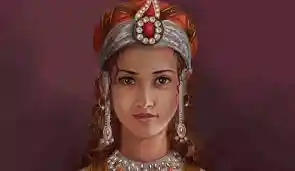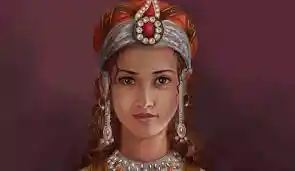Jalâlat-ud-Dîn Raziyâ
Every little girl who has a brother might be told that they aren’t as good as their brothers. Well, this statement hasn’t been born and brought up recently but has been going on in the sayings from a very long time. However, the only good thing is that the girls who this is said to, don’t really believe a word of it and prove out to be better than their brothers.

Pillar of the woman and queen of her era, Razia Sultan ; Source: Medievalists.net
It all started with the first and the last queen of the Delhi Sultanate, Razia Sultan.
Born to a normal slave family, her father Shams-ud-din Iltutmish was married to the then ruler’s daughter because of his skill and valor. The then ruler of the Delhi Sultanate was Qutb-ud-din of the islamic religion.
It wasn’t much later that Qutb-ud-din died, passing on the throne to one of his sons, Aram Baksh. He took over the throne in the year 1210. Aram Baksh was a king unlike his father and was disliked in all of the sultanate. Not being able to rule the country properly, his mother and he were assassinated.
Having made his way into the royal family, Razia’s father was appreciated a lot for his skills and dynamism. After the death of Aram Baksh, the Sultanate and its governing powers were passed on to none other than Razia’s father himself. Getting the throne of the Sultanate from being a slave, Shams-ud-din happily accepted the position. He also proved that the decision to choose and make him the king wasn’t wrong. Everyone in the kingdom loved him as a king and he ruled the Sultanate very efficiently and successfully as well.
Being the good ruler that he was, he was a remarkable father as well. Training his children for every possible situation of life, he made sure that all his children, his three sons and a daughter were included in the training. Removing the gender barrier from there on, Razia too got the training for everything that was taught to her brothers in order of the preparation of taking over the throne after their father.
Out of all the four children, Razia was the only one who showed true interest in the working of the kingdom and the way things worked. The rest of them were only interested in enjoying the lavish atrocities that ‘being a royal’ offered. Seeing the true dedication and passion towards the Sultanate, Shams-ud-din declared Razia as the heir apparent for the throne.
Razia was to take over the throne when her father died; however, the Islamic society at that time was completely opposed to the decision of making a woman as their ruler. Hence, the throne was passed on to one of Razia’s brothers instead of her.
Regardless, what was destined to happen had to happen. The tenure of ruling the Delhi Sultanate of Razia’s brother was very less. Further, the throne was passed on to Razia. She proved out to be one of the best rulers that the Delhi Sultanate had ever seen.
It was from then that the differences and discrimination between the genders of male and female started decreasing.
Razia made sure the attire she wore was destined to any particular gender. That was one of the first step the queen took towards women empowerment and gender discrimination, being one of the heroes the girls, who are told that their brothers are better, look up to. Loved and regarded by everyone, Razia Sultan was the first and the last woman ruler of the kingdom.

Pillar of the woman and queen of her era, Razia Sultan ; Source: Medievalists.net


